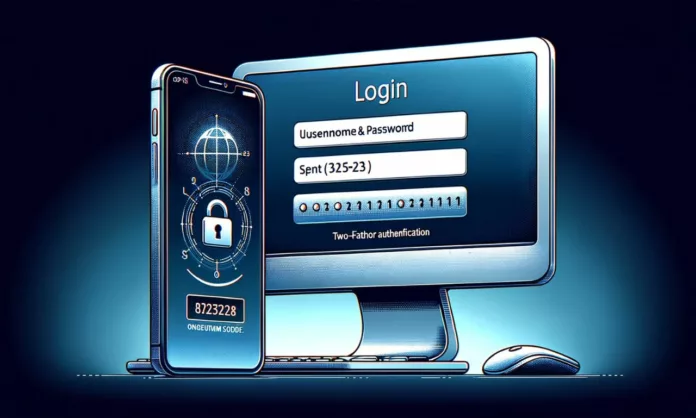Two-factor authentication (2FA) is a security method where users must present two distinct forms of identification to confirm their identity. This method is an essential part of a multi-layered security strategy, as it adds an additional layer of protection, making it harder for unauthorized individuals to gain access to devices or online accounts.
Table of Contents
Definition and Importance
Two-factor authentication requires two types of credentials for the authentication process, which dramatically decreases the chance of a successful cyber attack. It combines something you know (like a password), something you have (like a smartphone), or something you are (like a fingerprint).
Examples of Two-Factor Authentication
- SMS-Based 2FA: This involves receiving a text message with a code after entering your password. For instance, when logging into an account, after inputting your password, the service sends a unique code to your mobile phone, which you must enter to gain access.
- Authentication Applications: Applications such as Google Authenticator and Authy produce codes that are valid for only a short period. After entering your password, you open the app to obtain a code that rotates every 30 seconds.
- Biometric Verification: This involves a fingerprint, facial recognition, or retinal scan in addition to a password. Many smartphones now offer this feature, requiring a fingerprint or facial scan to unlock the device.
- Hardware Tokens: These are physical devices, like a USB security key, that you plug into your computer after entering your password. They are used in high-security environments.
- Push Notifications: Some services send a push notification to your smartphone after you enter your password. You then approve or deny the login attempt directly from your phone.
- Email Confirmation: After entering your password, you receive an email with a link or code that you must click or enter to complete the login process.
Advantages of Two-Factor Authentication
- Enhanced Security: By requiring a second form of identification, 2FA makes it significantly harder for hackers to breach accounts.
- Reduced Fraud and Identity Theft: As the authentication is linked to something the user has or is, it’s difficult for someone to access your data if they do not have physical possession of your second factor.
- Compliance with Regulations: Many industries require or strongly recommend the use of 2FA to protect sensitive data.
Limitations and Considerations
- Inconvenience: Some users may find it cumbersome to use an additional step for verification.
- Dependence on Physical Devices: If you lose your phone or hardware token, it can be challenging to access your account.
- Vulnerability to Certain Attacks: SMS-based 2FA can be vulnerable to SIM swap attacks, and hardware tokens can be lost or stolen.
Conclusion
Two-factor authentication greatly improves security by adding a second layer of defense beyond just a password. While it can sometimes be inconvenient and is not impervious to all types of attacks, the benefits of using 2FA in protecting sensitive information are immense. As cyber threats continue to evolve, the use of 2FA will likely become even more prevalent and essential in both personal and professional digital security strategies.

